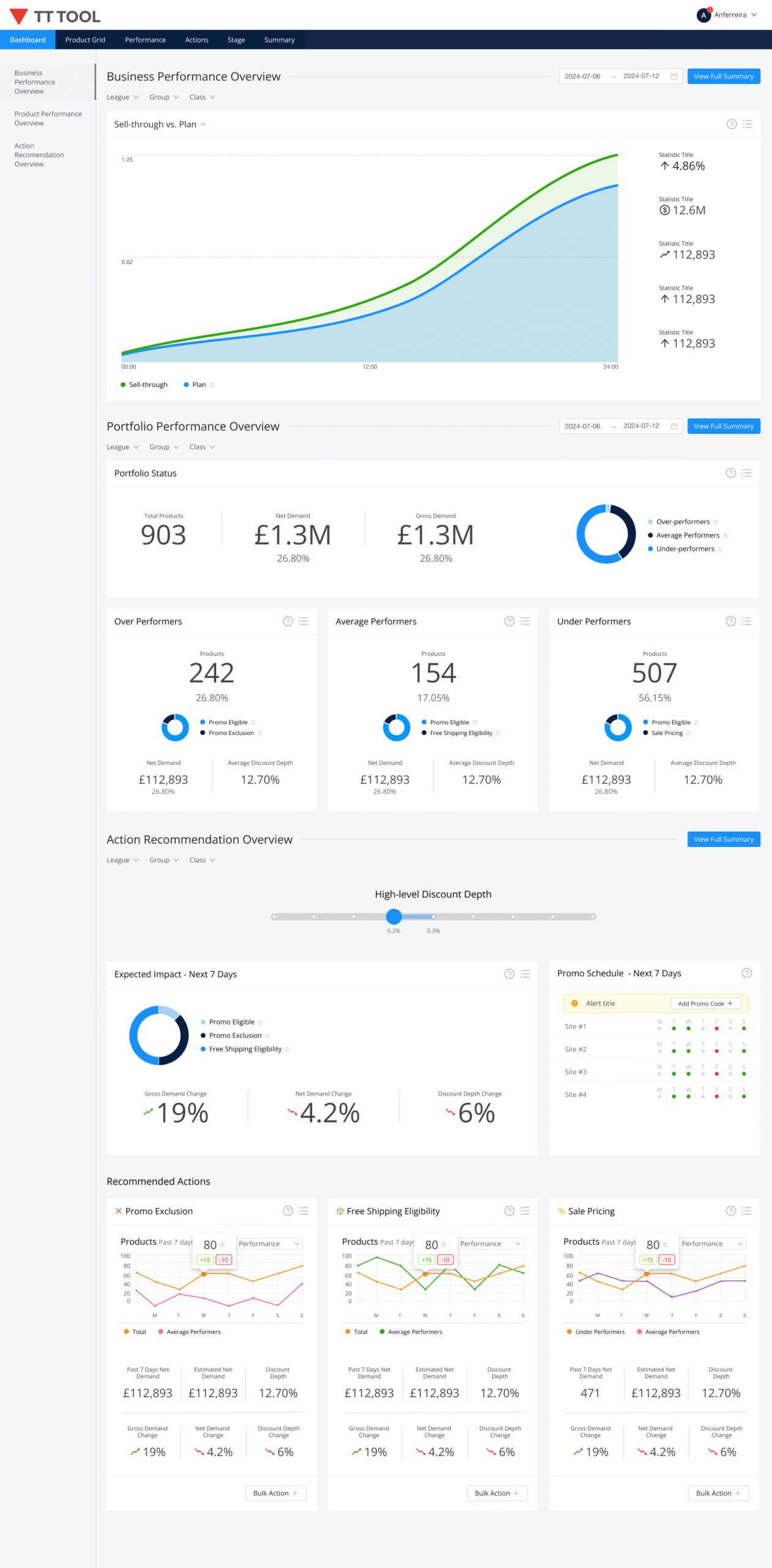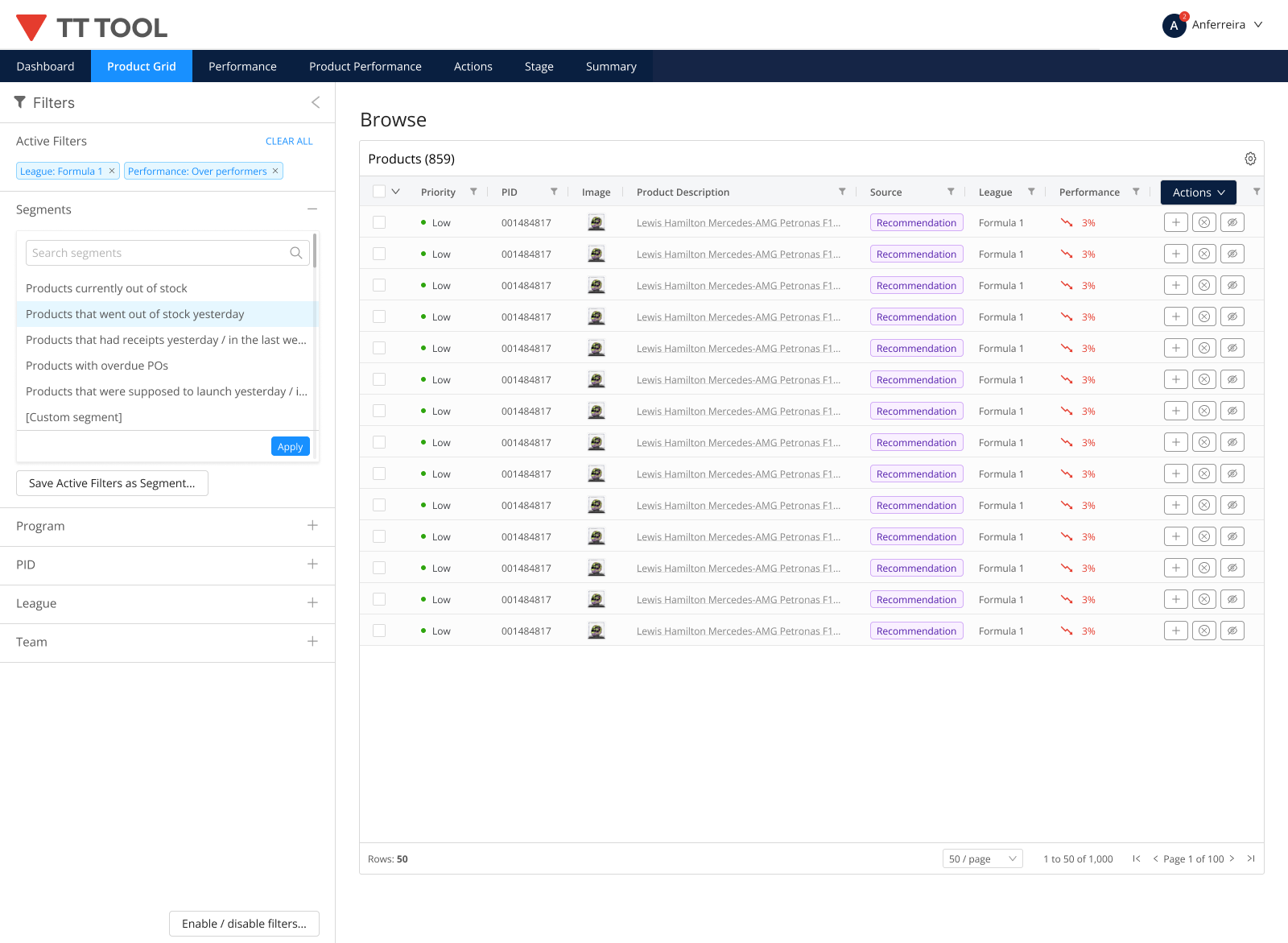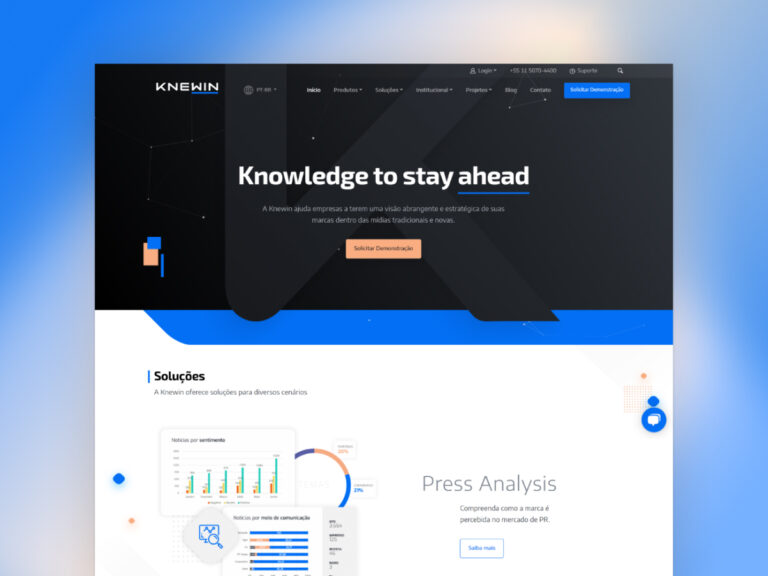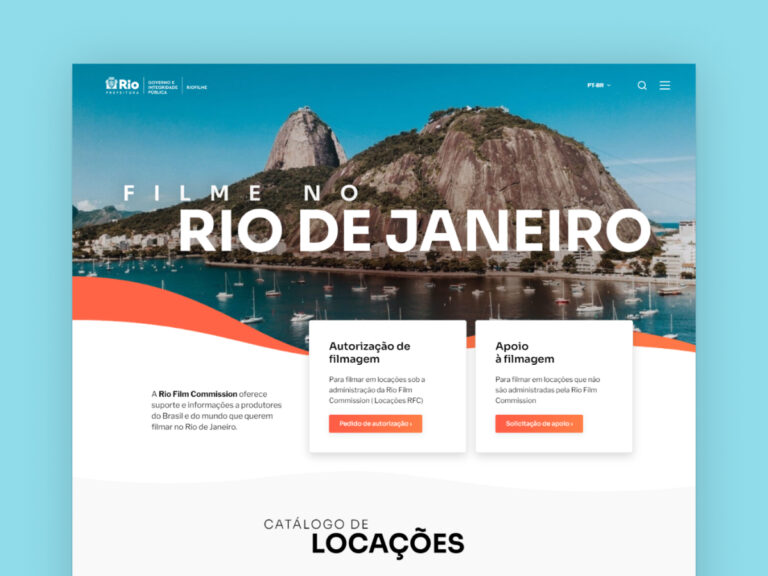Context and Goal
A US-based global leader in sports apparel e-commerce, was facing a critical challenge: the price update operation was partially manual, fragmented across multiple tools, and could take weeks to complete. The goal was to build a centralized system capable of suggesting large-scale pricing adjustments across the catalog in an automated, accurate way, driven by predictive data on market fluctuations.
Solution and Impact
I led the entire end-to-end UX/UI process — from discovery, flows, wireframes, prototypes, design system to hand-off — scaling the product from an MVP (9,000 products) to global adoption (3+ Million products). The price update process was reduced from weeks to daily executions, with less effort and greater accuracy.
My role
- Lead UI/UX Designer
Tools
- Figma
- Ant Design UI Framework
Deliverables
- Interactive prototype
- Design System components
✦ Key outcome
The pricing process was automated, reducing weeks of manual work to a daily process, minimizing human errors, and increasing efficiency. The system was adopted globally, managing over 3 million SKUs.




Case study
Designing for complexity
I was invited to join the Data Engineering team on a strategic global pricing initiative. The product already had a functional Proof of Concept, that was built with generic UI components, without defined flows or designed screens. My role was to structure the end-to-end experience, translating the complexity of data models into clear and actionable interfaces.
First Step: Discovery and Mapping
I began by diving into the core feature — Action Recommendation, which suggested price adjustments based on predictive data. From there, I expanded the mapping across the system, identifying interdependencies and critical points for the user experience.
From Draft to Validation
The next step was creating low-fidelity wireframes, which enabled us to validate flows and interactions quickly with the engineering team and business stakeholders. This process reduced risks and ensured alignment before moving forward with visual design decisions.
Prototyping with Precision
With flows validated, I moved on to high-fidelity prototypes, building and refining one feature at a time. This work followed a continuous cycle of prototyping, review, and validation, ensuring each functionality met both technical and business requirements.
Delivered Features
Key deliveries included:
- Dashboard Overview (Home) – executive view of the system.
- Action Recommendation – repricing suggestions powered by predictive models.
- Pricing Automation Flow – recommendation, staging, forecasting review, and approval.
- Product Summary View – detailed insights on products and recommendations.
- Manual Actions – complementary manual adjustments.
- Reports – performance reports and forecasting metrics for the business team.
Outcome
The design process transformed a functional but limited MVP into a robust, scalable product — delivering visual clarity, operational efficiency, and confidence for critical global pricing decisions.

